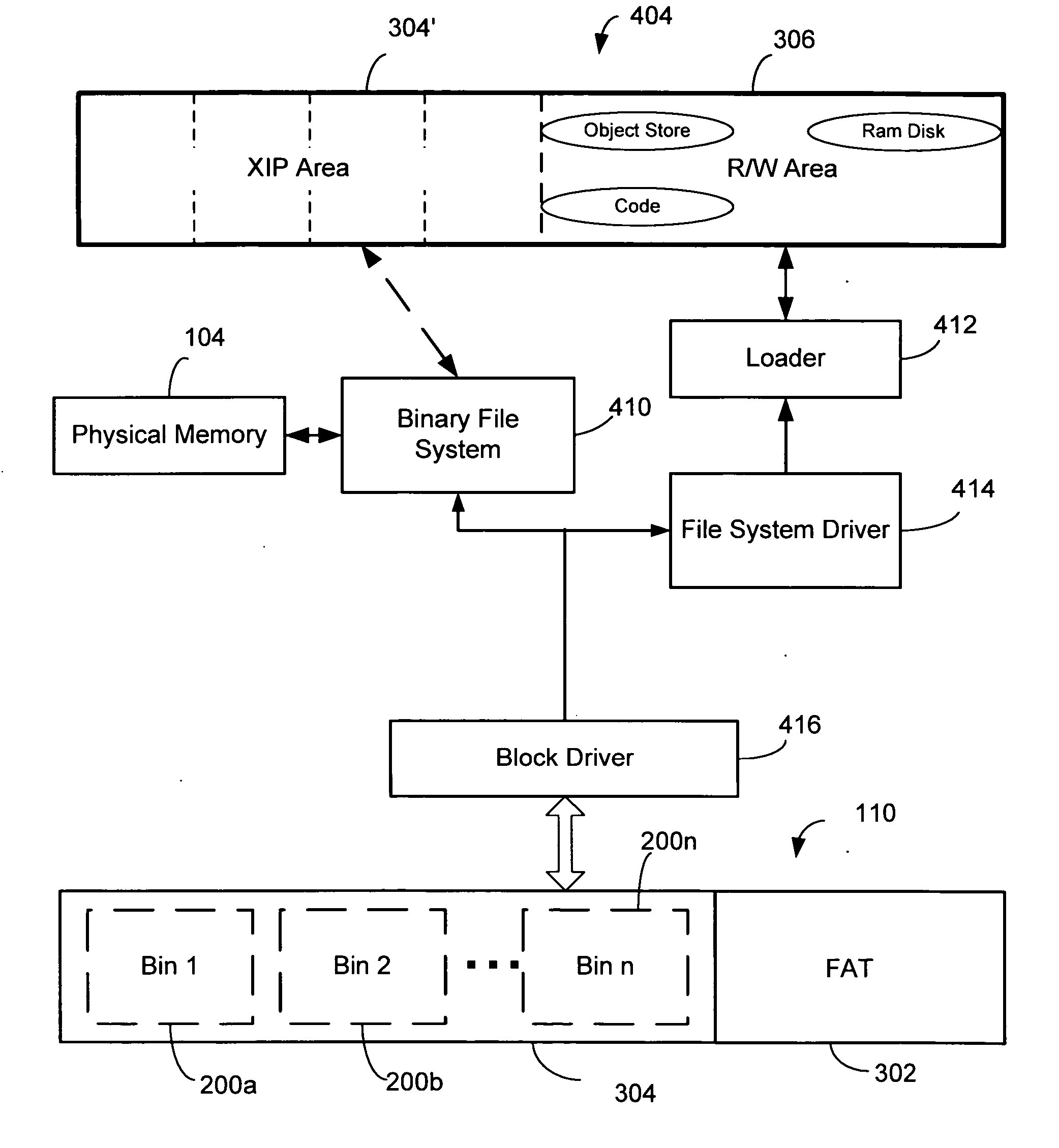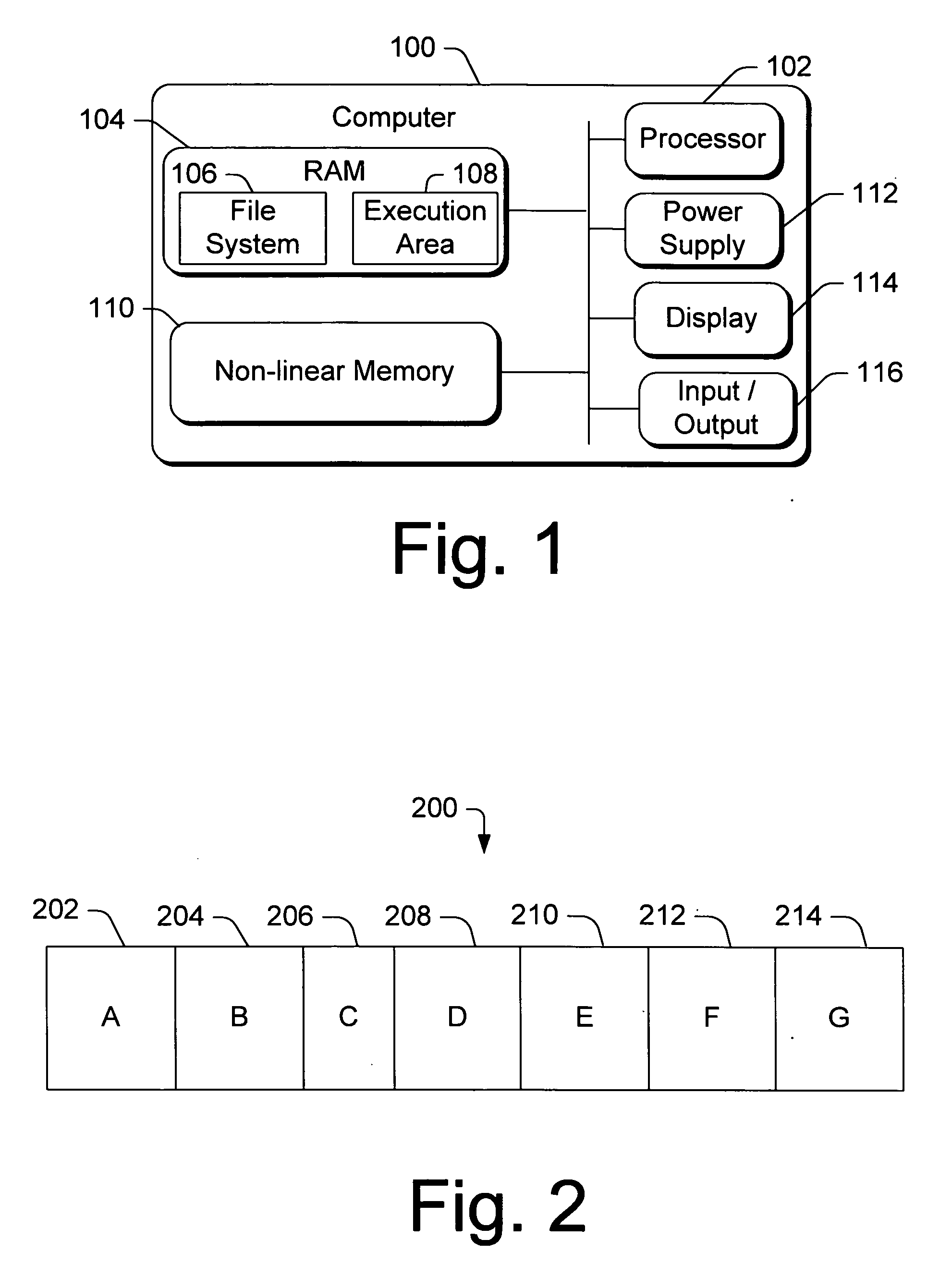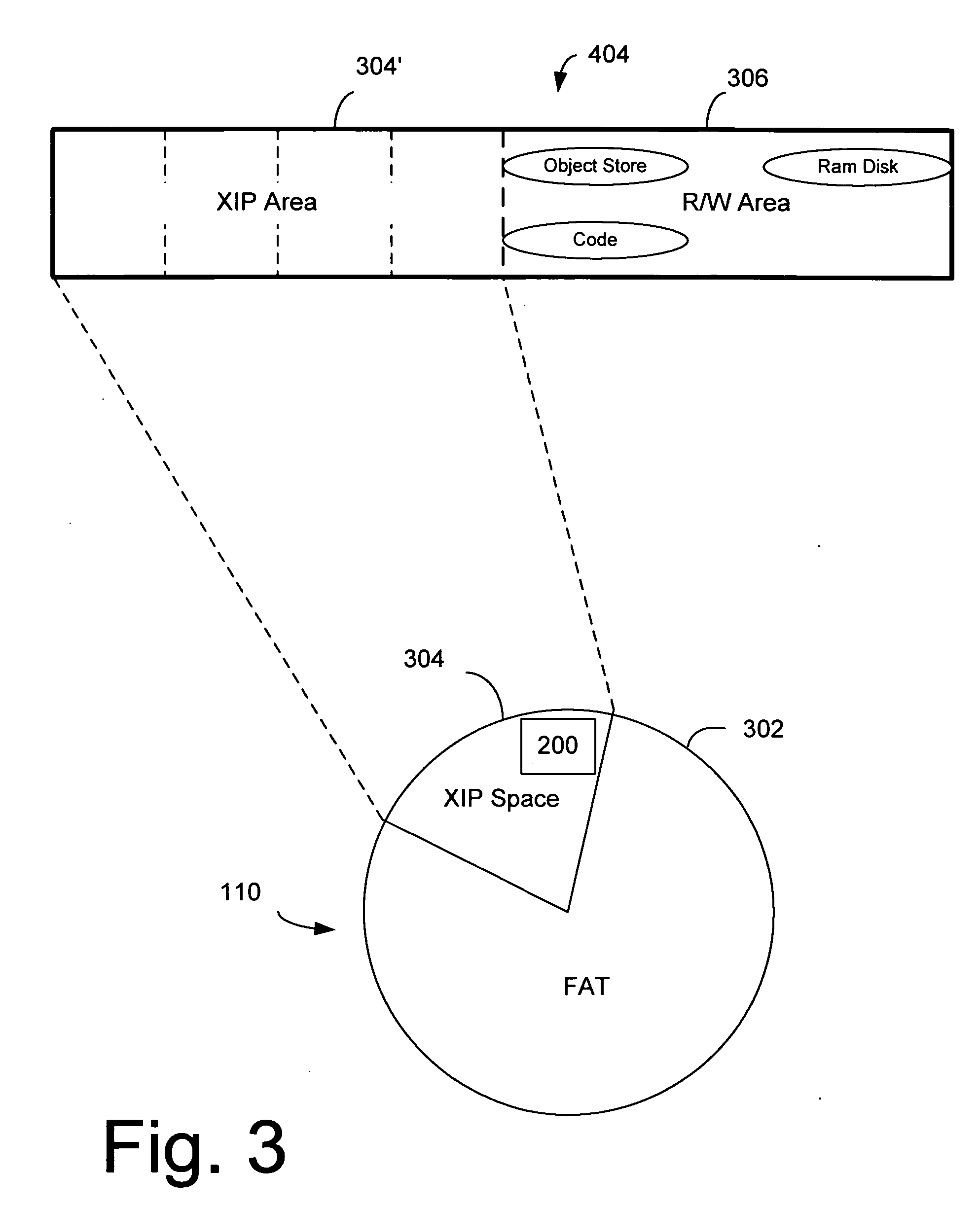System and method for executing binary images
a binary image and system technology, applied in the field of system and method for executing binary images, can solve the problems of block addressable devices such as disk storage systems that are generally not usable for execute in place images, lack of real software upgrade paths for field devices, and the inability of cpus to directly execute code stored in nand flash memory, etc., to achieve less working ram and less working ram
- Summary
- Abstract
- Description
- Claims
- Application Information
AI Technical Summary
Benefits of technology
Problems solved by technology
Method used
Image
Examples
Embodiment Construction
Overview
[0019] The following discussion is directed to executing fixed-up binary images from non-linear memory. The subject matter is described with specificity to meet statutory requirements. However, the description itself is not intended to limit the scope of this patent. Rather, the inventors have contemplated that the claimed subject matter might also be embodied in other ways, to include different elements or combinations of elements similar to the ones described in this document, in conjunction with other present or future technologies.
Exemplary Computer System
[0020]FIG. 1 illustrates functional components of a computer 100, such as a handheld computer, wherein aspects of the invention can be incorporated. The computer 100 represents many processing systems, such as desktop computers, notebook system, portable wireless communication handsets, palmtops, personal digit assistants (PDAs), pocket personal computers (PCs), portable gaming systems, multimedia systems, the combin...
PUM
 Login to View More
Login to View More Abstract
Description
Claims
Application Information
 Login to View More
Login to View More - R&D
- Intellectual Property
- Life Sciences
- Materials
- Tech Scout
- Unparalleled Data Quality
- Higher Quality Content
- 60% Fewer Hallucinations
Browse by: Latest US Patents, China's latest patents, Technical Efficacy Thesaurus, Application Domain, Technology Topic, Popular Technical Reports.
© 2025 PatSnap. All rights reserved.Legal|Privacy policy|Modern Slavery Act Transparency Statement|Sitemap|About US| Contact US: help@patsnap.com



